
The front of the new Skid Row Care Campus on Crocker Street (image credit: Michelle Zacarias)
On a typical day, locals tend to avoid the intersections of Crocker and 5th Street in downtown Los Angeles. The cross streets are located right in the heart of Skid Row, which has earned a reputation for being home to one of America’s largest and most visible homeless encampments.
For the residents who live there, however, the tents that line the street represent their daily life and a consistent community.
Over the years, city and county leaders, health workers, residents and community organizers have worked towards shifting perceptions of Skid Row’s residents, many of whom are facing a variety of personal and financial hardships.
Now, in the first-of-its-kind, the Skid Row Care Campus has offered the unhoused community a glimpse at stability. Since its opening in April, the campus has offered dozens a place to shower and do laundry, access medical care without judgment or simply rest without being treated as a nuisance.

A volunteer at the Skid Row Care Campus help put kits together (image credit: Michelle Zacarias)
The campus comes out of the Skid Row Action Plan, a community planning initiative that expands access to interim and permanent housing, health care, harm reduction and other supportive services. The plan, developed by Skid Row community members along with public, private and non-profit organizations, seeks to address systemic racism and disinvestment in Skid Row by supporting a culturally vibrant and thriving community.
According to staff members, the 3.4-acre, community-driven site was envisioned as a lasting refuge. Its architecture is deliberately welcoming, featuring both indoor and outdoor spaces where visitors can charge their phones, listen to music, freshen up or socialize. Thoughtful use of color and design elements reflects the care and intention behind this piece of urban infrastructure.
Run by community organizations and staffed by people from the Skid Row neighborhood, the campus reflects what Skid Row residents have highlighted as the greatest needs in the community.
“It’s based on feedback from the community–so it’s what they want, and it’s tailored to what they’ve asked for," said Associate Director of Community Initiatives, Aurora Morales.

The laundry room available to guests at the Skid Row Care campus facility (image credit: DHS -Department of Health Services).
Morales spoke with CALÓ News during an in-person tour of the facility. She mentioned that the goal is to improve the health and well-being of Skid Row community members and create pathways out of homelessness. Since opening, The Skid Row Care Campus has served approximately 3,000 people per day across all of the programs.
"The Skid Row care campus is so significant for this community because it provides not only opportunities for people to work, [as well as] opportunities for the community members to be safe,” said Morales. Additionally, there are opportunities for individuals to be paid to contribute and work on-site, which Morales says helps boost confidence and morale.
A different kind of solution
Unlike many past initiatives, which have drawn criticism for being disorganized or short-lived, the Skid Row Care Campus is the result of many years of community input.
The project is the product of rare alignment: between city and county agencies, healthcare providers, and nonprofits—funded in part by L.A. Care Health Plan and Health Net, two of the state’s largest Medi-Cal providers.

At the Skid Row Care Campus, there are opportunities for visitors to sign up for paid shifts (image credit: Michelle Zacarias)
Evoniesha Smith, a care specialist at Wesley Health Centers who works in harm reduction, described the campus as a crucial refuge for individuals struggling with substance use. “I feel like it's very important,” she told CALÓ News, “just because they're homeless or they're on drugs, doesn't mean that they don't deserve to have someone care for them and love them and motivate them.
“The Skid Row Care campus truly embraces the reality of how many unhoused individuals deal with substance abuse and mental health issues. It does not shy away from the fact that many of them struggle with a widespread public health epidemic on their own. A lot of them don’t get that from their families or friends — so I’m here to support them,” added Smith.
Still, staff are quick to temper their celebration with realism. The Care Campus is one piece of a regional crisis. The Greater Los Angeles Homeless Count estimated that 3,800 people were unsheltered in Skid Row, accounting for about 70% of the area's unhoused population.

The respite center inside the Skid Row Care Campus (image credit: DHS -Department of Health Services).
Still, the launch of the Skid Row Care Campus marks a step in the right direction. For many, it is a reflection of what’s possible when funding is directed toward supporting vulnerable populations. "It’s really beautiful to see this site come to life – more of this is needed,” emphasized Morales.
“This isn’t the end-all; there’s definitely more to build upon here."

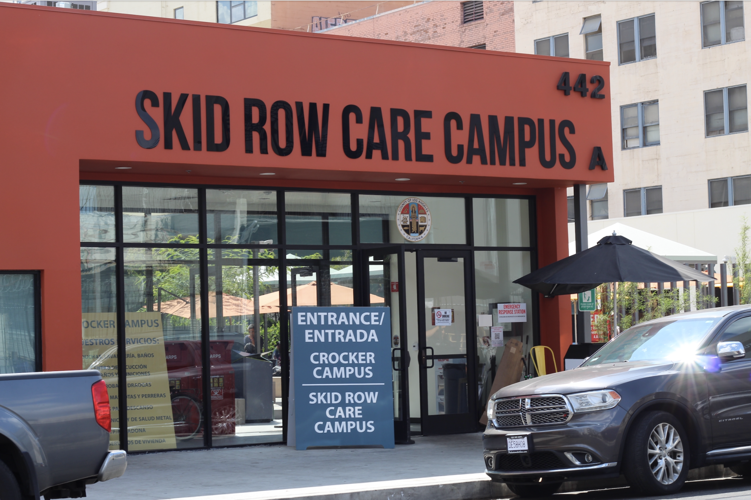
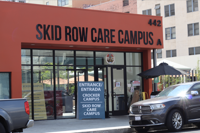
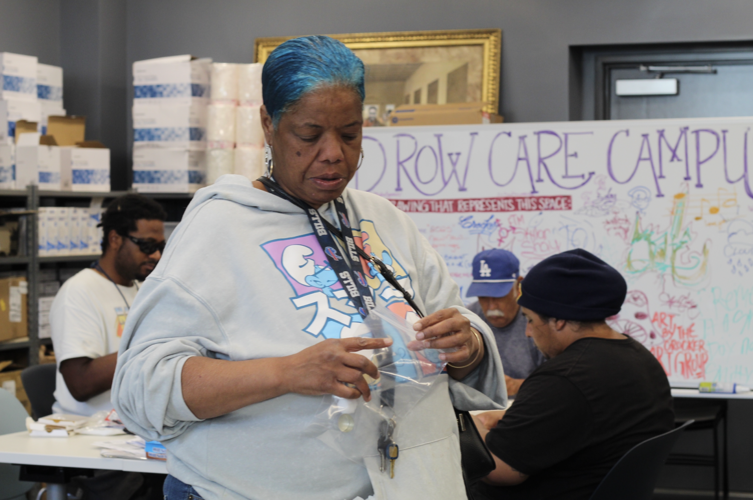
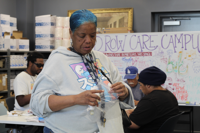
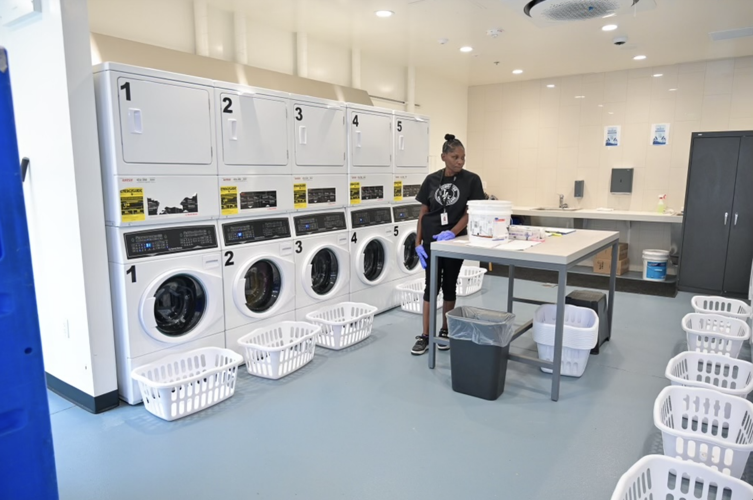
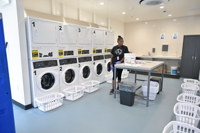

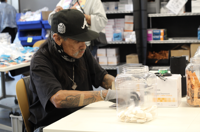
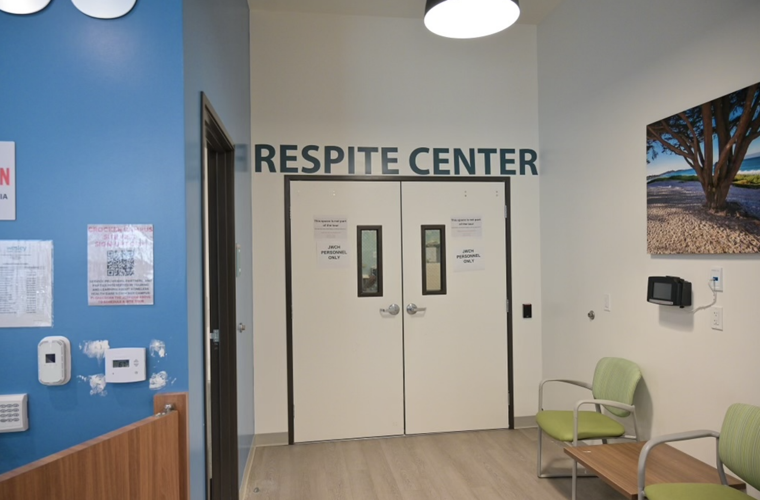
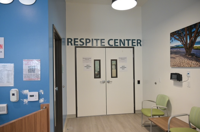

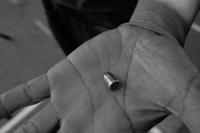



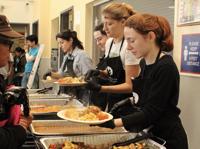


(0) comments
Welcome to the discussion.
Log In
Keep it Clean. Please avoid obscene, vulgar, lewd, racist or sexually-oriented language.
PLEASE TURN OFF YOUR CAPS LOCK.
Don't Threaten. Threats of harming another person will not be tolerated.
Be Truthful. Don't knowingly lie about anyone or anything.
Be Nice. No racism, sexism or any sort of -ism that is degrading to another person.
Be Proactive. Use the 'Report' link on each comment to let us know of abusive posts.
Share with Us. We'd love to hear eyewitness accounts, the history behind an article.